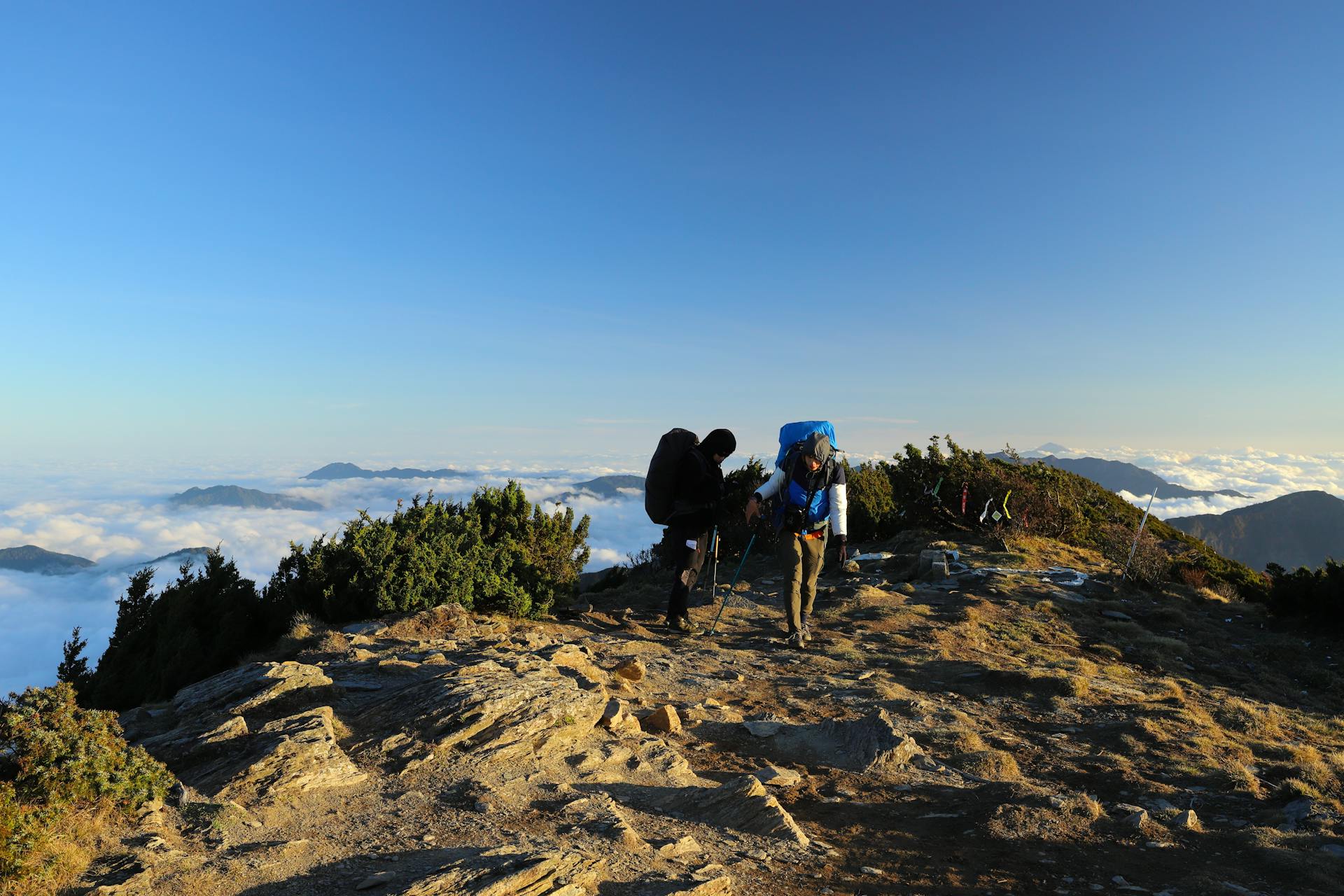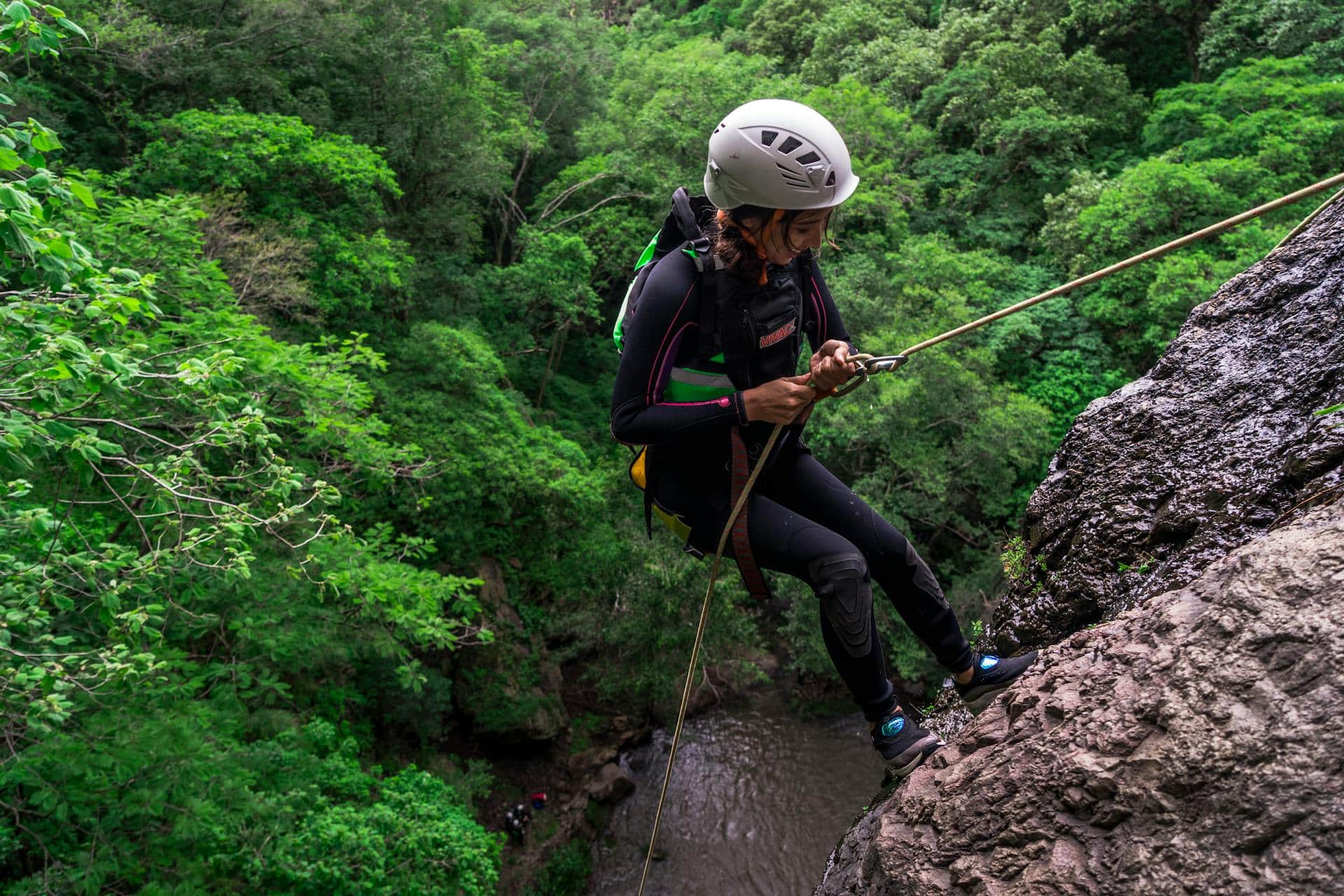Top rope climbing provides an exciting and easy way to start exploring the world of rock climbing. It gives novices a chance to climb and feel the excitement of reaching high but safety-wise. By providing coverage of the critical areas of top rope climbing, this comprehensive guide ensures that you are well informed and ready to start climbing.
Essential Equipment
Before venturing out, ensure you have the necessary gear: Before venturing out, ensure you have the necessary gear:
Harness: This gives a safe belay rope attachment. Go for a comfortable harness that will be snug-fitting without being too tight.
Climbing shoes: Such give excellent grip and hold on climbing walls or rock surfaces. Choose shoes that are tight-fitting and which have the level of stiffness or flexibility you desire.
Belay device: This friction-based tool lets the belayer control the rope, feeding slack out and catching falls in a controlled manner. Get acquainted with its working and train under the supervision of a certified teacher.
Locking carabiners: These link together different parts of the climbing system. Make sure that they are certified for climbing and inspect their locking mechanisms before each climb.
Climbing rope: Climbing has dynamic ropes that are made to take the impact of falls. Select a rope of suitable length for the climbing area and make sure it is in good condition with no cuts or abrasions.
Safety First
More About Travel: NruTimes
Top rope climbing prioritizes safety, but it’s crucial to always follow proper procedures: Top rope climbing prioritizes safety, but it’s crucial to always follow proper procedures
Certified belayer: Do not ascend without a certified belayer who has appropriate belay skills and safety measures.
Partner checks: Complete the partner checks thoroughly before the commencement of each climb and make sure both the climber and the belayer have their gear on properly and checked. Test the quality of knots and whether carabiners are closed.
Communication: Keep clear communication with your belayer during the ascent. Signal commands “on belay,” “climbing,” “slack,” and “lower me” to guide the operation and prevent possible miscommunications.
Mastering The Climb
Top rope climbing involves fundamental techniques that lay the foundation for your climbing journey: Top rope climbing involves fundamental techniques that lay the foundation for your climbing journey:
Footwork: Good balance is a result of good footwork and stability throughout the climb. This involves learning techniques such as placing your feet flat on the holds, using edges for precise footholds, and smearing for friction on small footholds.
Hand placement: Proper hand positioning helps you to move your weight properly and control while climbing. Examples of techniques are crimping the smallest of edges, with jugs providing a positive hold, and open-handed methods for sloping holds.
Body positioning: Know how to place your body near the wall for better stability and leverage. Hips to the wall, heel hooks and toe hooks, and body positioning are examples of these techniques.
Route reading: Acquire the skill of “route reading” which means to recognize the order of holds and move effectively. This includes the examination of the available handholds and footholds, drawing a mental picture of the few upcoming movements, and positioning the body to achieve this end.
The Art of Belaying
The belayer plays a vital role in ensuring the climber’s safety: The belayer plays a vital role in ensuring the climber’s safety:
Taking in slack: The belayer controls the rope, fluidly removing the slack as the climber goes up. This keeps the rope from falling slack and also decreases the likelihood of falls.
Catching falls: The belayer, being the last climber in the group, should use the belay device to catch the climber’s fall safely and in a controlled manner. Catching falls with the help of an instructor in a controlled environment.
Lowering the climber: Upon completion of the climb, the belayer lowers the climber off safely by slowly paying out the rope, hence, a controlled descent.
Additional Tips for Success
Start easy: Start with the routes appropriate for beginners and then move on to more difficult ones as you advance in your expertise and self-assurance.
Seek professional guidance: Instructors who are certified climbers should be sought for proper climbing tactics, safety procedures, and belaying skills.
Hydration and clothing: Drink lots of water during the climbing period and wear loose comfy clothes for free movement.
Embrace the journey: Climbing is a path of total learning and perfection. Have Fait with yourself, do not forget to reward yourself, and ask for help when you need it.
Top Rope Climbing: Beyond the Basics (Advanced Techniques and Considerations)
Visit Our Website For More News: NRUTimes
When you have mastered the basics of top rope climbing, you want to learn more about advanced techniques and aspects, which will help you improve your abilities and safety. This section builds upon the previous knowledge, venturing into the realm of advanced climbing: This section builds upon the previous knowledge, venturing into the realm of advanced climbing:
Advanced Techniques
Footwork: With time, perfect your footwork skills. Learn approaches such as drop knees for increased reach, heel hooks and toe hooks for strong pull-ups, and footwork techniques such as stemming and bicycle kicks to understand particular climbing features.
Hand placement: Practice more difficult handholds such as pinches, gastons, and dynos (dynamic movements) to clear tough sections. Master the skill of changing the position of your hands and using different technologies according to a certain hold and your body.
Body movement: Enhance your body awareness and experience higher-level body movements such as flagging, dead hangs, and mantels.
Route reading: With the increase of your climbing experience develop your route-reading skills and you will learn to decipher intricate sequences, foresee difficult sections, and build efficient movements. Consider not only handholds and footholds but also think about possible rest places and how to save energy during the climb.
Safety Considerations
Advanced Anchor Systems: There, top rope climbing usually employs the already existing anchors, but knowing the basic anchor-building principles will prepare you for your future adventures. Understand various anchor setups, knot tying for anchors, and adequate anchor redundancy for increased safety. This information is important if you want to proceed to lead climbing later on.
Fall Dynamics: The harder routes you try the more important it is to know the dynamics of falling. Get to know the factors that affect fall force and how to reduce the impact on your body and the belayer. Practice controlled falls under the supervision of a coach in a safe environment to master the technique of a good fall.
Mental Focus: Top rope climbing is more of a head game than a physical sport. Psychological skills such as visualization, positive self-talk, and fear management could improve the action of climbing. Engage in mindfulness and breathing practices to remain calm and focused while climbing.
Additional Considerations
Climbing Etiquette: Learn the climbing gym etiquette that includes consideration, maintaining clear communication, equipment, and area use.
Climbing Ethics: Outdoors, find out about the climbing ethics in the area, minimize your impact on the environment, respect established routes and closures, and clean up after yourself.
Continuous Learning: The process of climbing is a lifetime adventure of discovery and study. Look for such possibilities as training, clinics, and advanced courses conducted by certified climbing instructors.
Top Rope Climbing: Mental Strategies and Flow of Energy with the Surroundings
Though physical strength and technique are integral to top-rope climbing, the psychological aspect plays an equally important part in the process of success and enjoyment. Here, we explore strategies to enhance your mental game and discover the flow state: Here, we explore strategies to enhance your mental game and discover the flow state:
Visualization: Visualize yourself as having managed to finish the climb. Imagine the order of actions, position of hands, foot positions, and the movement of the body. This cognitive rehearsal can increase self-assuredness, enhance movement economy, and lessen anxiety.
Positive self-talk: Substitute negative thoughts for positive affirmations. Be your supporter, recognize your success, and transform obstacles into learning and development. Positive self-talk builds resilience and keeps motivation up.
Mindfulness: Be in the present. Keep attention on your breathing, body feelings, and the present climbing problem. Do not focus on past errors or future fears. Mindfulness helps you to remain composed under surprise circumstances and make sound decisions on the wall.
Finding flow: Work toward the state of flow, which is a state of complete absorption in the present moment, losing self-consciousness, and feeling of effortless movement. The optimum performance state comes from the balance of challenge and skill that permits you to perform at the peak.
Top Rope Climbing: Taking the Gym and Lead Climbing Further
Top rope climbing offers a fantastic foundation for exploring various climbing disciplines: Top rope climbing offers a fantastic foundation for exploring various climbing disciplines:
Outdoor Climbing: After getting used to the gym surroundings, think about the transition to outdoor climbing. This creates new challenges such as the weather, different rock types, and the need to create your anchor. Partners should always be experienced, safety measures should come first, and always be ready for the peculiarities of outdoor climbing.
Lead Climbing: After you advance in your climbing skills and gain confidence, you may want to try lead climbing, when you clip the rope into anchors that are already in place as you climb. This takes advanced skills in anchor building, rope handling, and fall dynamics. Obtain the right type of training as well as certification from a qualified instructor before trying out lead climbing.
Top Rope Climbing: An Uplifting Community
Climbing isn’t a solitary pursuit; fosters a supportive and encouraging community: Climbing isn’t just a solitary pursuit; it fosters a supportive and encouraging community:
- Seek mentorship: Contact experienced climbers who can give important advice, share information, and provide motivation.
- Support fellow climbers: Support other climbers by providing them guidance and useful tips, helping to create a friendly and open climbing atmosphere.
- Give back to the community: Volunteer in climbing gyms and conservation works to preserve climbing areas and make them sustainable for the next generations.
Conclusion
Top rope climbing is a combination of physical and mental challenges that promote the development of the self and the sense of success. Having gone through the comprehensive guide, armed with all the necessary information, and taking safety as a priority, you are ready to embark on the fun journey of climbing and also enjoy the excitement of reaching new heights!
FAQs
What is the minimum age to have a go at top-rope climbing?
- The age requirements depend on the gym or climbing area. Mostly, children of 5 years and older can take part in the process but with the necessary supervision and instruction.
Is top rope climbing a safe activity?
- Top rope climbing is safe if safety procedures are observed, such as using approved equipment, climbing with a belayer, and carrying out partner checks before each climb.
What level of upper body strength is required for top rope climbing?
- Although upper body power is useful, top rope climbing is mainly about foot placement, technique, and fluid body motion. You may develop your climbing power and endurance step-by-step by beginning with easier routes and progressing according to your own pace.
Can I teach myself top rope climbing?
- The best advice is to take classes from a certified climbing instructor to learn the correct technique, security protocols, and belaying skills. With numerous instructional videos and resources available, the presence of a live instructor will guarantee a secure and productive learning process.
Advantages of top rope climbing?
- Top rope climbing is an excellent full-body workout, helps in developing coordination and balance, improves mental focus and problem-solving skills, and provides a sense of achievement and elation.



